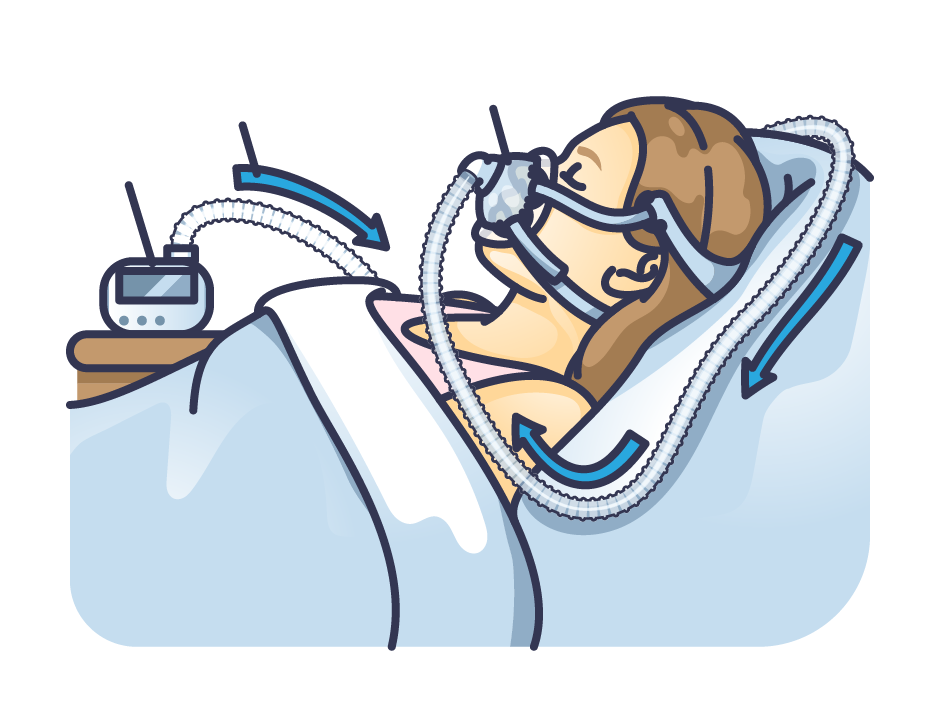How the body's clock affects individuals with sleep apnea
- Shaun McGillis
- 59 minutes ago
- 3 min read

Recent research from the Oregon Institute of Occupational Health Sciences at Oregon Health and Science University found that for individuals with sleep apnea, the circadian rhythms that protect healthy people during sleep pose risks for cardiovascular health.
In a controlled study, the research team isolated a mechanism that may finally explain why people with sleep apnea suffer heart attacks and strokes disproportionately during nighttime hours. The culprit appears to be the circadian clock itself—the internal timekeeping system that governs many physiological processes in the human body.
The research, “The endogenous circadian system attenuates nighttime vascular endothelial function in people with untreated obstructive sleep apnea” was printed in the prestigious Journal of the American Heart Association.
A reversed protection system
Professors Saurabh Thosar and Steven Shea led a team of scientists that observed 12 adults with moderate to severe untreated sleep apnea during the study. Participants lived for five days on a recurring cycle of five hours and 20 minutes, alternating between brief periods of sleep and wakefulness. This "forced desynchrony" protocol, as chronobiologists call it, allowed researchers to separate the effects of the internal circadian clock from behavioral factors like sleeping, eating, and physical activity.
Sleep apnea and the 3 a.m. vulnerability window
The results revealed a stark pattern. Using flow-mediated dilation (FMD)—a standard measure of blood vessel health that predicts cardiovascular risk—the team found that vascular function in sleep apnea patients plummeted to its lowest point around 3:00 a.m. The difference between peak and trough measurements reached 82%, a variation larger than the improvement typically achieved after three months of continuous positive airway pressure (CPAP) therapy, the gold standard treatment for sleep apnea.
What makes this finding particularly striking is its contrast with healthy individuals. Previous work from the same research group showed that in people without sleep apnea, vascular function actually improves throughout the night, then declines in the morning. The circadian system, in other words, appears to offer a protective enhancement during sleep hours—but only for those with healthy airways.
When biology backfires
The reversal of this protective pattern in sleep apnea patients suggests that the circadian system, normally adapted to anticipate and prepare for daily changes in activity and environment, becomes maladaptive in the presence of repeated nighttime breathing disruptions. Instead of protecting blood vessels during rest, circadian-driven physiological changes may amplify cardiovascular vulnerability when the body experiences oxygen deprivation from apneic episodes.
This represents the first human study to demonstrate that circadian rhythms in a cardiovascular risk marker fit the epidemiological pattern of when adverse events occur. It positions the circadian system as a potential mechanism underlying the nighttime timing of heart attacks and strokes among individuals with sleep apnea.
Clinical implications and future directions
The findings could have major implications for the estimated 39 million U.S. adults living with sleep apnea. Current treatments focus primarily on eliminating breathing disruptions but rarely consider circadian timing in cardiovascular risk management. The research suggests that when interventions are delivered—and perhaps even when cardiovascular medications are administered—could matter as much as what those interventions are.
The next question for the research team is: does CPAP treatment normalize the circadian rhythm of vascular function? If eliminating nighttime breathing interruptions can restore the protective circadian pattern seen in healthy people, it would provide powerful evidence that the circadian system serves as a modifiable link between sleep apnea and cardiovascular disease.
For now, the study offers a compelling biological explanation for a long-observed clinical pattern. The body's internal clock, evolved over millions of years to optimize survival, appears to require more than just time to do its job—it needs unobstructed breathing to maintain the vascular protection that guards against the most dangerous hours of the night.
_______________________________________
This work was supported by National Institutes of Health (NIH) Grants R01-HL-125893, F32-HL-131308; R35-HL-155681, R01-HL-163232, National Space Biomedical Research Institute through Cooperative Agreement NCC 9-58; the Ford Foundation Fellowship Program and 1K01HL151745; Oregon Institute of Occupational Health Sciences at Oregon Health & Science University via funds from the Division of Consumer and Business Services of the State of Oregon (Grant ORS 656.630); and NIH Clinical Translational Science Award UL1-TR-000128.




Comments